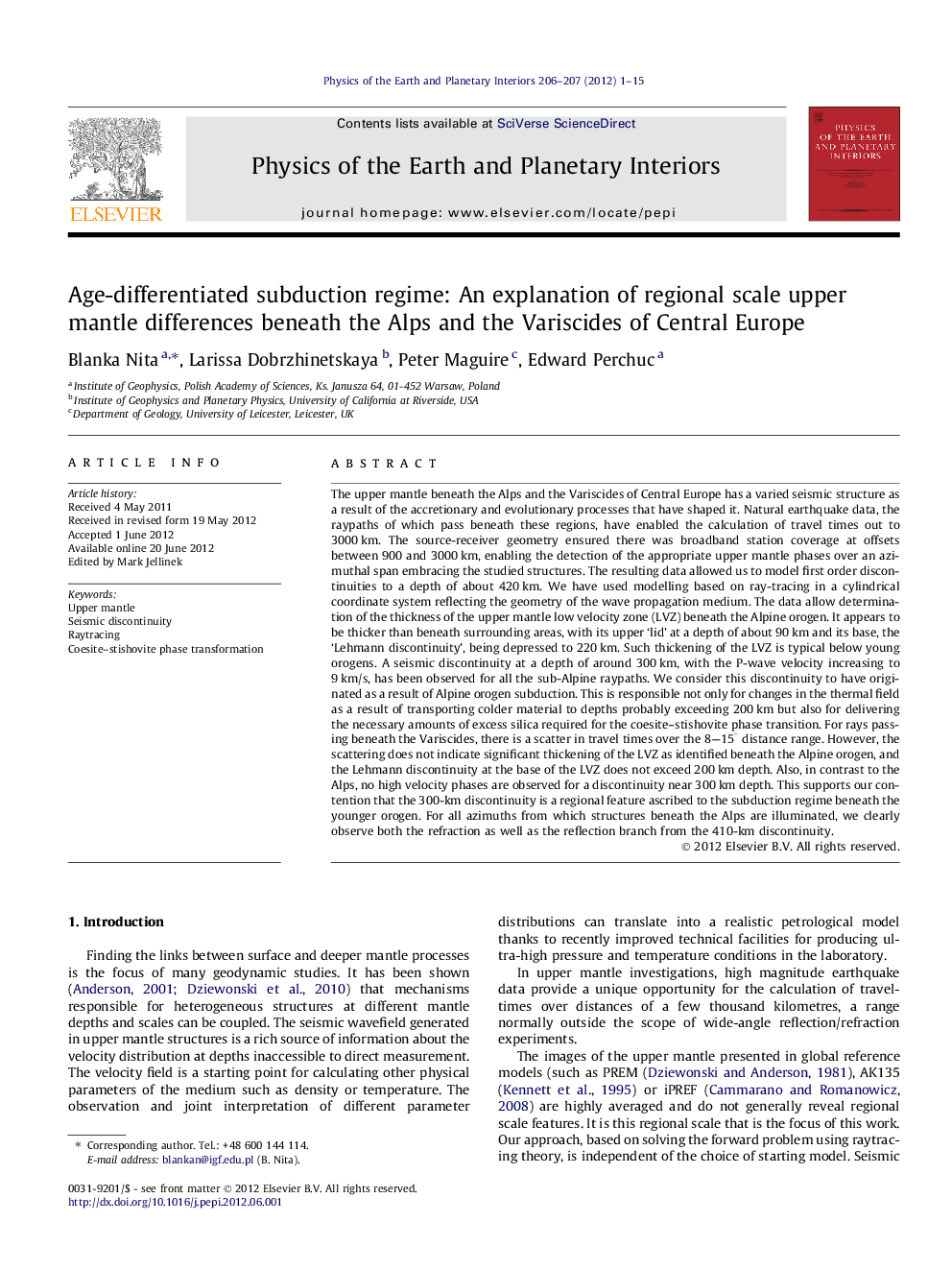| کد مقاله | کد نشریه | سال انتشار | مقاله انگلیسی | نسخه تمام متن |
|---|---|---|---|---|
| 4741711 | 1641531 | 2012 | 15 صفحه PDF | دانلود رایگان |

The upper mantle beneath the Alps and the Variscides of Central Europe has a varied seismic structure as a result of the accretionary and evolutionary processes that have shaped it. Natural earthquake data, the raypaths of which pass beneath these regions, have enabled the calculation of travel times out to 3000 km. The source-receiver geometry ensured there was broadband station coverage at offsets between 900 and 3000 km, enabling the detection of the appropriate upper mantle phases over an azimuthal span embracing the studied structures. The resulting data allowed us to model first order discontinuities to a depth of about 420 km. We have used modelling based on ray-tracing in a cylindrical coordinate system reflecting the geometry of the wave propagation medium. The data allow determination of the thickness of the upper mantle low velocity zone (LVZ) beneath the Alpine orogen. It appears to be thicker than beneath surrounding areas, with its upper ‘lid’ at a depth of about 90 km and its base, the ‘Lehmann discontinuity’, being depressed to 220 km. Such thickening of the LVZ is typical below young orogens. A seismic discontinuity at a depth of around 300 km, with the P-wave velocity increasing to 9 km/s, has been observed for all the sub-Alpine raypaths. We consider this discontinuity to have originated as a result of Alpine orogen subduction. This is responsible not only for changes in the thermal field as a result of transporting colder material to depths probably exceeding 200 km but also for delivering the necessary amounts of excess silica required for the coesite–stishovite phase transition. For rays passing beneath the Variscides, there is a scatter in travel times over the 8–15°8–15° distance range. However, the scattering does not indicate significant thickening of the LVZ as identified beneath the Alpine orogen, and the Lehmann discontinuity at the base of the LVZ does not exceed 200 km depth. Also, in contrast to the Alps, no high velocity phases are observed for a discontinuity near 300 km depth. This supports our contention that the 300-km discontinuity is a regional feature ascribed to the subduction regime beneath the younger orogen. For all azimuths from which structures beneath the Alps are illuminated, we clearly observe both the refraction as well as the reflection branch from the 410-km discontinuity.
► We compare the upper mantle beneath the Alps and the Variscides in Europe.
► A new seismic discontinuity at a depth of 300 km beneath the Alps is identified.
► The 300-km discontinuity seems to be a regional feature associated with the young orogen.
► We explain its nature by the coesite–stishovite phase transformation.
► The thickness of the LVZ and the 410-km discontinuity depth variation is also analysed.
Journal: Physics of the Earth and Planetary Interiors - Volumes 206–207, September 2012, Pages 1–15